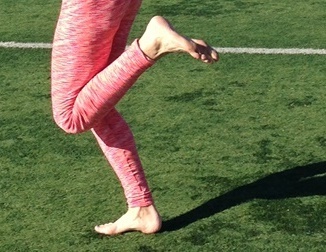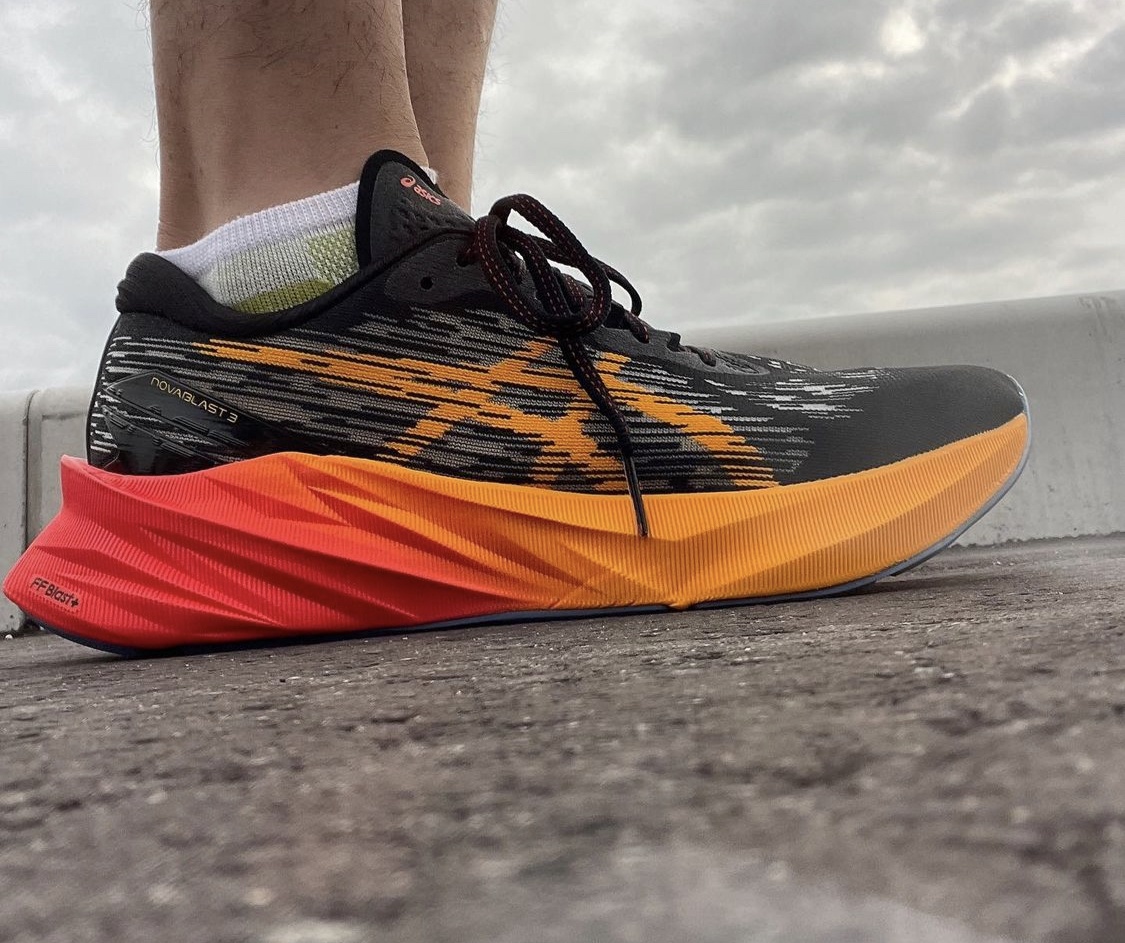When it comes to optimizing foot health and improving the efficient use of your biomechanics, being barefoot, especially outdoors, is better than cushioned shoes because the sensory input acting on the bare foot is directly responsible for immediate improvements in strengthening the bones, intrinsic muscles, soft tissues, blood vessels and nerves deep within the foot.
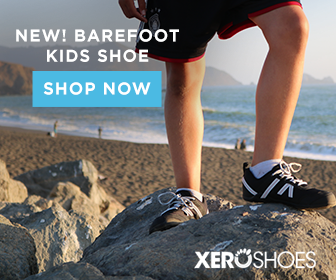
This is why with all the advancements in running shoe technology, injury rates have never declined, rather running injuries continue to increase because in a cushioned shoe, the sensory feedback isn’t there to keep the feet strong, which is a proven factor that leads to progressive degeneration of foot and ankle strength.
Good news is a wide array of research during the past few decades has shown that those who increased barefoot activity had the largest improvements in foot functional strength, arch-height profile as well as dynamic balance and postural control!
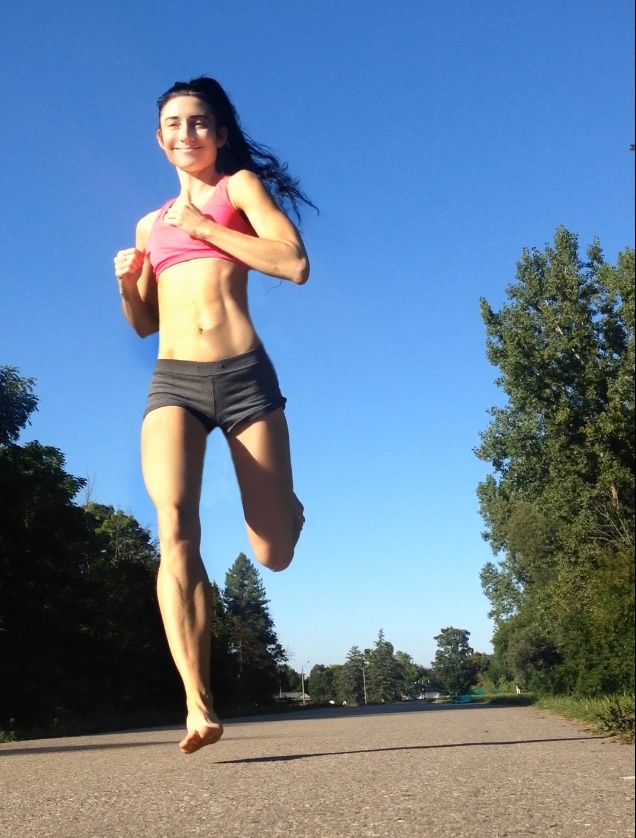
Its no secret that humans didn’t just evolve without big thick cushioned shoes on our feet, but we evolved as endurance barefoot runners. Humans are a barefoot running species and through this we evolved a specific set of mechanical traits that enabled our early-selves to completely avoid injury, otherwise we would have died out if running, especially barefoot, injured us.
Knowing this makes it obvious that being barefoot is the gateway for developing optimal foot strength and walking and running form.
How Barefooting Builds Strong Feet
Increases in muscle activity directly stimulates muscle growth in the foot whereby the greater the muscle activity more often, the greatest in improvements in foot strength, but whats the best way to increase muscle activation in the feet?
Much of the muscle activation in the foot is sensory-driven. Going barefoot gives you the strongest sense of the ground which is why it delivers the best deep nerve stimulation that directly improves nerve connections essential to switching on widespread muscle activation in the foot.
How Cushioned Running Shoes Weakens Your Feet
Foot weakness and discomfort, which leads to poor balance and mobility impairments, arises from limited underfoot sensory input, and is a common consequence of routine use of thickly shoes. This is because thick underfoot cushioning impedes the conversion of underfoot sensory stimulation to functional strength development of the foot. Basically, the thicker the underfoot cushioning, the more the foot is starved of sensory input, the weaker your foot becomes over time.
- lack of underfoot sensory stimulation from a cushioned shoe results in a disintegration of nerve stimulation and muscle activity, which is largely to blame for the loss of muscle volume and functional strength in the feet.
Even worse, cushioned shoes disrupts the flow of oxygen within the foot, which is another way these shoes contribute to foot weakness whereby reductions in underfoot-nerve stimulation leads to negative changes in the circulation of nutrient-rich blood and oxygenation levels.
- When the underfoot-nerves are highly activated or stimulated, like they are most optimally when barefoot, they consume more oxygen which is pulled out of the blood flowing in nearby capillaries. In this way, more nourishment is delivered to the soft tissues and muscles within the foot.
This is why you should be barefoot as much as possible because its the only way to gain the biggest improvements in sensory functions and muscular strength in the feet, which in turn, allows motor performance and even learning and mood to get better, and better!
It’s for all these reasons that experts and coaches are quickly warming up to the idea that increased barefoot activity can be a major clearinghouse for injury while making the feet better at adapting to new levels of training.
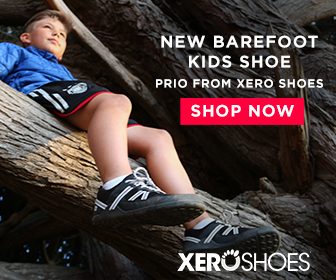
If you’ve enjoyed this content, you’ll love my content over at my YouTube, here, where I talk in more detail about the more ways barefoot running improves running form as well as the advantages of forefoot running over heel strike running.
If you’d like, you can support Run Forefoot and help keep it going by making a donation in any amount of your choosing:

Or, you can support Run Forefoot by shopping at the BEST Barefoot Shoe Brands, and be sure to bookmark these links 🙂
Lonowear: https://lonowear.com/?ref=cedsholh
Saguaro: https://www.saguaro.com/?ref=9bVA8fEkmDvB-I
Vibram FiveFingers: https://www.anrdoezrs.net/click-7600968-11372648
Vivobarefoot: https://amzn.to/3vycQOY
Be Lenka: https://www.tkqlhce.com/click-7600968-13947200
Xero Shoes: https://xeroshoes.com/go/Run_Forefoot
Iguaneye: https://www.iguaneye.com/?ref=8tfXVc92
Soft Star Shoes: https://shrsl.com/3mp1b
Wilding Shoes: https://bit.ly/3lIygQP

Bretta Riches
BSc Neurobiology; MSc Biomechanics candidate, ultra minimalist runner & founder of RunForefoot. I was a heel striker, always injured. I was inspired by the great Tirunesh Dibaba to try forefoot running. Now, I'm injury free. This is why I launched Run Forefoot, to advocate the health & performance benefits of forefoot running and to raise awareness on the dangers of heel striking, because the world needs to know.
Latest posts by Bretta Riches (see all)
- Can You Run In Barefoot Shoes? Yes, But DON’T Heel Strike! - 21/07/2024
- Why Cushioned Running Shoes Are Really Bad for Your Feet - 19/07/2024
- Do Cushioned Running Shoes Cause Injuries? - 17/07/2024

